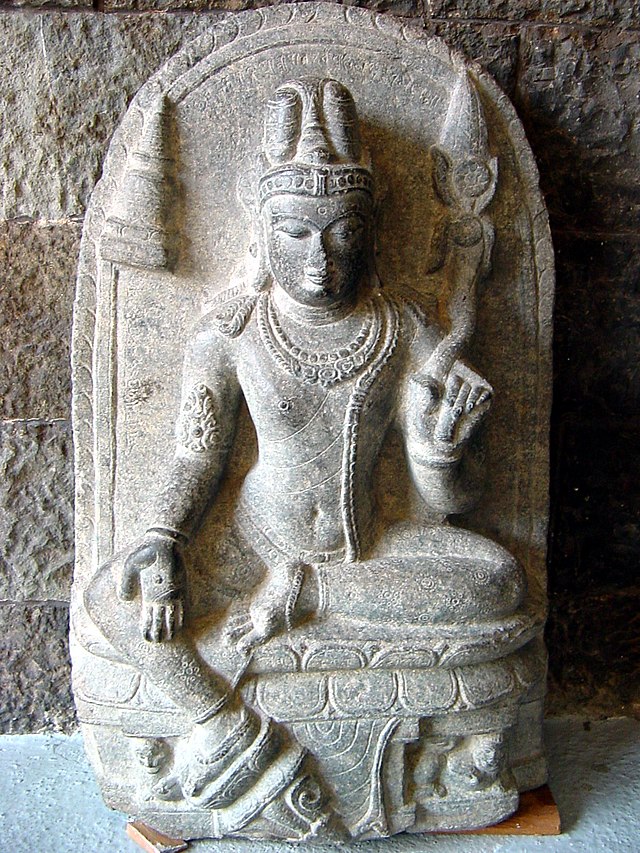Top Qs
Timeline
Chat
Perspective
Varadamudra
Hand gesture in Indian religions From Wikipedia, the free encyclopedia
Remove ads
The Varadamudra (Sanskrit: वरदमुद्रा, romanized: varadamudrā) or Abheeshta Mudra, often translated as Wish-granting Mudra or Wish-bestowing Mudra, is a symbolic gesture featured in the iconography of Indian religions. It indicates a gesture by the hand and symbolises dispensing of boons.[1] It is represented by the palm held outward, with the fingers outstretched and pointing downwards. Sometimes, the thumb and the index finger meet, forming a circle.[2]


The Varadamudra and the Abhayamudra are the most common of several other mudras seen on divine figures in the art of Indian religions.[citation needed]
Remove ads
References
External links
Wikiwand - on
Seamless Wikipedia browsing. On steroids.
Remove ads
